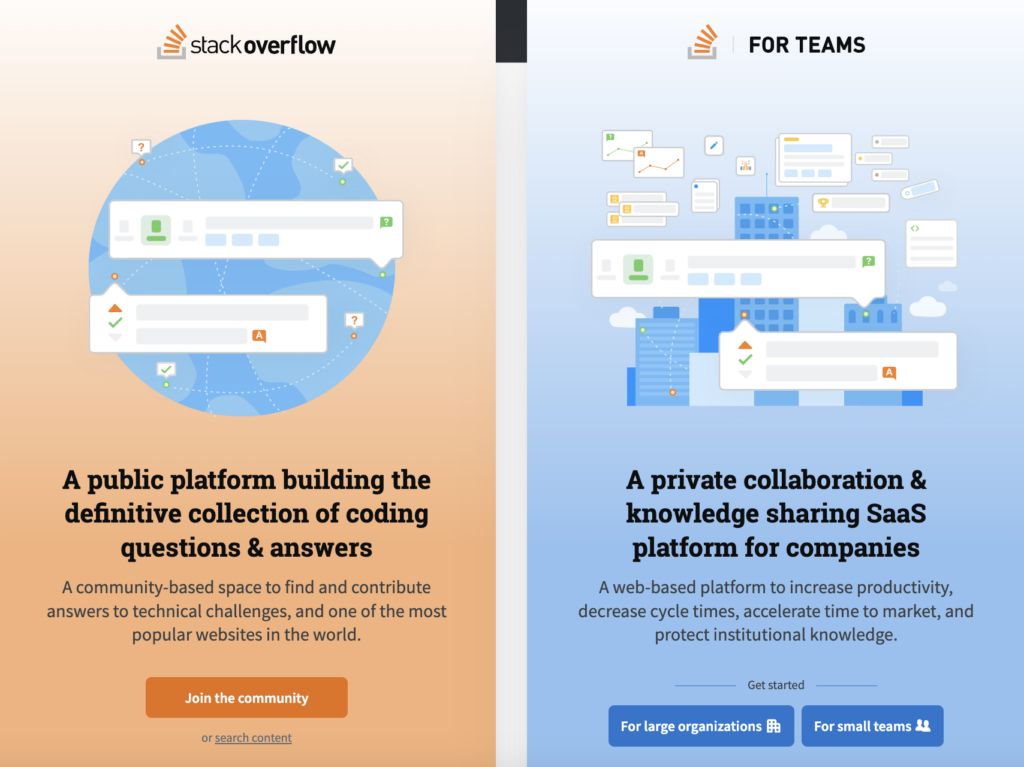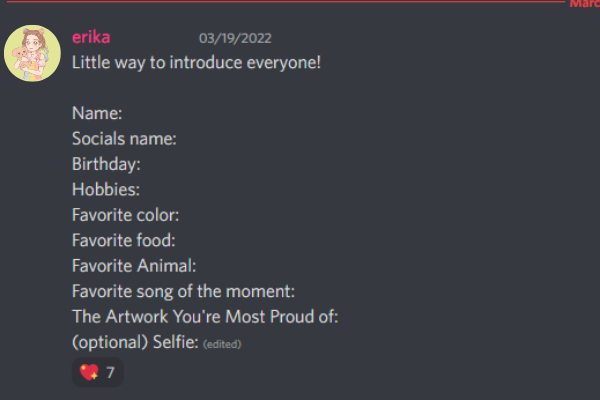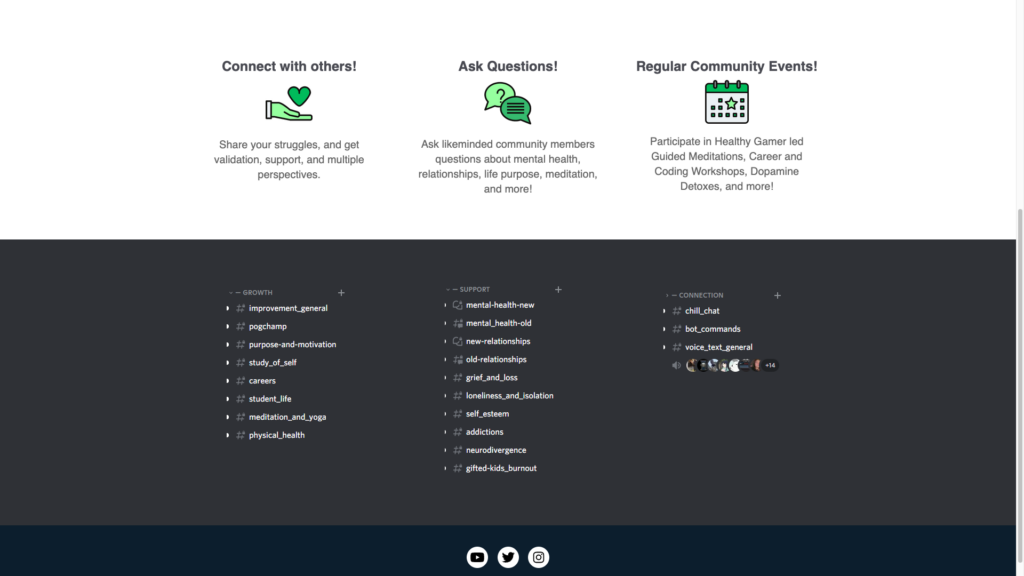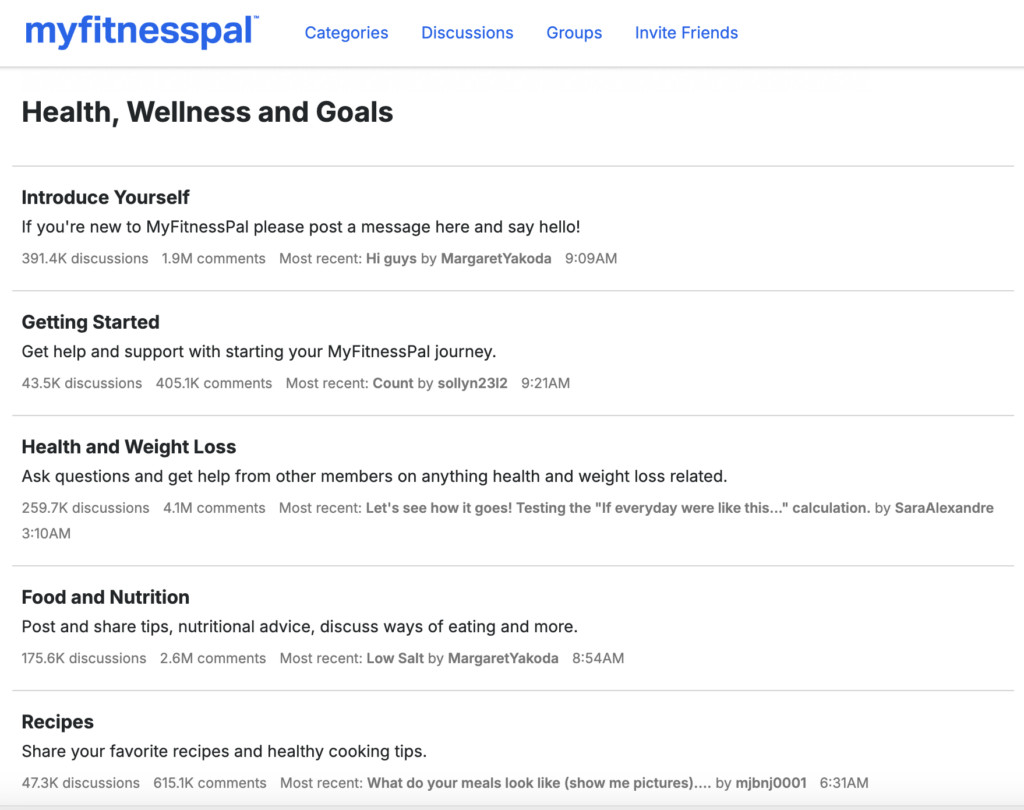
Have you ever felt stuck trying to solve a problem, only to find the answer from a complete stranger online? Or maybe you’ve discovered a hidden passion and yearned to connect with others who share your enthusiasm. This is the magic of online communities.
These virtual spaces bring people together around shared interests, fostering a sense of belonging and connection. Imagine a thriving online hub where you can exchange ideas, learn from experts, and build meaningful relationships – all from the comfort of your own home. That’s the power of a well-built online community.
In this article, we’ll guide you through the essential steps to create your own successful online community. Whether you’re a business owner, an educator, or simply passionate about a particular cause, this guide will equip you with the knowledge and strategies to build a thriving online space that fosters engagement, connection, and growth.
We’ll break down the process into eight easy-to-follow steps, packed with practical tips and insights. So, if you’re ready to tap into the power of online communities, let’s dive in!
Table of Contents
Key Takeaways
- Start with a clear purpose and target audience: Define your community’s goals and who you want to attract. This will guide your platform selection, content strategy, and overall approach.
- Choose the right platform: Consider factors like size, features, scalability, and user-friendliness when selecting a platform that meets your community’s needs and can grow with you.
- Design a welcoming and engaging space: Create a visually appealing and user-friendly platform that fosters interaction and encourages members to feel at home.
- Foster engagement and build relationships: Implement strategies like contests, recognition programs, events, and meaningful discussions to keep members actively participating and connected.
- Develop a content strategy: Offer a variety of content formats (text posts, videos, infographics) that cater to diverse learning styles and address the core themes of your community. Leverage user-generated content to further enrich the experience.
- Measure success and continuously improve: Track key metrics to understand what’s working and what’s not. Use data to refine your strategies and keep your community evolving to meet the needs of your members.
- Promote your community: Utilize social media, influencer marketing, and word-of-mouth marketing to attract new members and spread the word about your thriving online space.

Step 1: Define Your Purpose and Target Audience
Before diving headfirst into creating your online community, it’s crucial to take a step back and solidify two key elements: your purpose and your target audience. These act as the foundation for your entire community, shaping everything from the platform you choose to the content you create.
Why Are You Building This Community?
Having a clear purpose will guide your decisions and keep you focused. Are you aiming to foster professional connections for entrepreneurs? Do you want to build a support network for people with a specific health condition? Perhaps you’re passionate about a particular hobby and want to create a space for enthusiasts to share knowledge and experiences.
A well-defined purpose attracts the right audience. Imagine building a community focused on cat lovers, but then realizing most members are dog owners. By clearly outlining your purpose from the beginning, you’ll attract individuals who share your vision and interests, fostering a more engaged and vibrant community.
Who Are You Trying to Reach?
Now that you know your “why,” it’s time to define your “who.” This involves understanding your ideal member – the type of person who will benefit most from your community.
Here’s where creating a target audience persona comes in. This is a detailed profile outlining your ideal member’s demographics (age, location, profession), interests, needs, and online behavior.
Research techniques like surveys and competitor analysis can be immensely helpful. Imagine you’re building a community for aspiring writers. Surveying existing writing communities can reveal the specific challenges and aspirations of your target audience, allowing you to tailor your content and resources accordingly.
By clearly defining your purpose and target audience, you’ll lay a strong foundation for a successful online community. Remember, a community thrives when it serves a specific purpose and attracts the right people to contribute and connect.
Example
Let’s take a look at Stack Overflow, a question-and-answer website specifically for programmers. Their purpose is clear: to provide a platform for developers to share knowledge, solve problems, and learn from each other.
Their target audience is well-defined – software developers of all experience levels. The platform caters to this audience by offering a structured format for asking and answering questions, along with a reputation system that incentivizes high-quality contributions.
Stack Overflow’s success lies in understanding their community’s needs. They provide users with the tools to efficiently search for solutions, upvote valuable answers, and downvote inaccurate information. This focus on quality control ensures the platform remains a reliable source of knowledge for developers worldwide.

Step 2: Choose the Right Platform
With a clear purpose and target audience in mind, it’s time to find the perfect platform to house your online community. This virtual space will be the foundation for fostering connections and building a vibrant hub. But with so many options available, how do you choose the right one?
Factors to Consider When Selecting a Platform
Several factors play a crucial role in selecting the ideal platform. First, consider the size and needs of your community. Will it be a small, intimate group or a large, bustling forum? Some platforms are better suited for smaller, close-knit communities, while others can handle thousands of members with ease.
Next, think about the functionalities you need. Do you require features like discussion forums, chat rooms, video conferencing, or live streaming? Having a clear grasp of your community’s needs will help you narrow down platforms that offer the necessary tools to facilitate interaction and engagement.
Scalability is another crucial consideration. Choose a platform that can grow with your community. Imagine starting with a small group on a platform with limited features, only to find yourself struggling to manage a thriving community later on. Look for platforms that offer flexible plans and the ability to add functionalities as your community expands.
Types of Online Community Platforms
Now, let’s delve into the various types of online community platforms available:
- Discussion Forums: These platforms are ideal for fostering in-depth discussions and knowledge sharing. Popular options include forums like phpBB and vBulletin.
- Social Networking Groups: Platforms like Facebook Groups and LinkedIn Groups offer a familiar interface for fostering connections and sharing updates within a closed group setting.
- Membership Websites: These platforms provide a more controlled environment, allowing you to offer premium content, courses, and paid memberships. Discourse and Mighty Networks are popular examples.
- Custom-Built Platforms: For highly specific needs or large-scale communities, custom-built platforms offer maximum control and flexibility. However, this option requires significant technical expertise and resources.

There’s no one-size-fits-all solution, so carefully analyze the pros and cons of each platform before making your decision. When considering popular options like Discord, Facebook Groups, or Mighty Networks, prioritize user experience and ease of use. A platform that’s intuitive and user-friendly will encourage participation and ultimately lead to a more successful community.
Remember, budget and technical expertise also play a role. Some platforms offer free plans with limited features, while others require paid subscriptions for more advanced functionalities. Choose a platform that aligns with your resources and technical capabilities.
By carefully considering your community’s needs and the features offered by different platforms, you’ll be well on your way to finding the perfect virtual home for your online community.
Step 3: Design and Set Up Your Community
Now that you’ve chosen your platform, it’s time to roll up your sleeves and design the online space where your community will thrive. First impressions matter, and creating a welcoming and engaging atmosphere is crucial for attracting and retaining members.
Structure for Success
Next, prioritize a clear and structured navigation. Members should be able to easily find their way around, locate relevant information, and participate in discussions with ease. Think about categorizing content logically, using intuitive menus, and offering a search function for added convenience.
Essential Elements for a Successful Online Community
- Welcome Area: Create a dedicated space for new members to introduce themselves, learn about the community guidelines, and find frequently asked questions (FAQs).
- Organized Discussion Areas: Structure your community into clear categories or forums based on different topics or themes. This allows for focused discussions and makes it easier for members to find relevant information.
- Member Profiles: Allow members to create profiles with bios and interests. This fosters a sense of personalization and encourages interaction.
- Engagement Tools: Integrate features that promote interaction, such as polls, Q&A sessions, and live chat options. These tools provide opportunities for members to connect, share ideas, and build relationships.

Content is King
Finally, consider your content strategy for launch. Having high-quality content that resonates with your target audience is crucial. Plan a schedule for regular content creation and posting to keep the conversation flowing. Additionally, encourage user-generated content to showcase diverse perspectives and further enrich the community experience.
By focusing on creating a visually appealing, well-structured, and user-friendly platform, you’ll lay the groundwork for a thriving online community. Remember, your design and setup should encourage interaction, foster a sense of belonging, and ultimately make members feel right at home.
Step 4: Foster Engagement and Build Relationships
We’ve built the foundation – a beautiful and functional platform. Now comes the lifeblood of any online community: engagement and relationships. This step focuses on strategies to keep members actively participating, fostering connections, and creating a sense of belonging.
Encouraging Active Participation
Imagine a party where everyone stands awkwardly in corners. It wouldn’t be much fun, right? Active community management is crucial to avoid this scenario. Here are some tactics to encourage participation:
- Contests and Challenges: Spark friendly competition and excitement with contests and challenges related to your community’s theme. Offer incentives like recognition or exclusive content for winners.
- Recognition Programs: Acknowledge and celebrate member contributions. Highlight insightful posts, helpful responses, or creative content to show appreciation and encourage further participation.
Moderation also plays a vital role. Ensure a positive and inclusive environment by establishing clear guidelines and enforcing them fairly. Respond to inappropriate behavior promptly and respectfully.
Fostering Connections
Beyond contests and rules, focus on building relationships within your community. Here’s how:
- Member Introductions: Facilitate introductions and connections between members with shared interests. This can be done through dedicated channels or icebreaker activities.
- Events and Activities: Host online events and activities that promote interaction, like live chats, webinars, or Q&A sessions with experts. These events create a sense of shared experience and foster connections.
- User Success Stories: Showcase member achievements and success stories within the community. This inspires others, demonstrates the value of participation, and strengthens the sense of community.
Creating A Sense of Belonging
Meaningful conversations are the glue that holds an online community together. Here’s how to encourage them:
- Thought-provoking questions: Pose questions that spark discussions and encourage members to share their perspectives.
- Responding to posts: Actively respond to member posts and inquiries. This shows you value their input and encourages continued engagement.

By implementing these strategies, you’ll transform your online community from a virtual space into a vibrant hub for connection, learning, and shared experiences. Remember, fostering engagement and building relationships requires ongoing effort and dedication. However, the rewards of a thriving online community filled with engaged and connected members make it all worthwhile.
Step 5: Content is King: A Content Strategy for Your Community
We’ve established a welcoming platform, fostered engagement, and nurtured relationships. Now it’s time to focus on the fuel that keeps any online community running – content. Just like a delicious meal keeps guests coming back for more, high-quality content is essential to attract and retain members.
Variety is Key
Remember the old saying, “variety is the spice of life”? This applies perfectly to your content strategy. Diversity in format is key to catering to different learning styles and preferences. Here are some content formats to consider:
- Engaging Text Posts: Informative and well-written blog posts, articles, or listicles can spark discussion and provide valuable insights for your members.
- Visually Appealing Content: Eye-catching infographics, images, and memes can break up text-heavy content and make information more digestible.
- Compelling Videos: Videos offer a dynamic and engaging way to share information, tutorials, or interviews with experts. They can be particularly effective for visual learners.
Content Pillars for Your Community
Content pillars form the backbone of your strategy. These are core topics or themes that resonate with your target audience and align with your community’s purpose. For example, a community for aspiring writers might have content pillars like creative writing tips, publishing advice, and author interviews.
Focus on creating valuable and informative content that addresses the needs and interests of your members. Imagine a community for fitness enthusiasts. Providing workout routines, healthy recipes, and motivational tips would be highly valuable to this audience.

Leverage User-Generated Content
Don’t underestimate the power of user-generated content (UGC). Encourage members to share their expertise, experiences, and creative work within the community. UGC adds diverse perspectives, fosters a sense of ownership, and keeps content fresh and engaging. Curate high-quality UGC to showcase member contributions and further enrich the community experience.
By developing a well-rounded content strategy that incorporates variety, focuses on value, and leverages UGC, you’ll keep your community members informed, engaged, and coming back for more. Remember, content is king, and a consistent flow of valuable information is essential for the long-term success of your online community.
Step 6: Measure Success and Continuously Improve
We’ve built a vibrant online community with a strong foundation, fostered engagement, and fueled it with valuable content. But how do we know it’s truly successful? This step focuses on measuring your progress and continuously improving your community based on data and member feedback.
Defining Success for Your Online Community
Imagine setting out on a journey without a map – it would be difficult to gauge your progress. The same goes for online communities. Before diving into data analysis, we need to define success for your specific community.
This involves identifying key performance indicators (KPIs) that align with your initial goals. Are you aiming for rapid membership growth? Do you prioritize high engagement rates, such as comments and discussions? Perhaps your focus is on content downloads or user-generated content creation.
KPIs can vary depending on your community’s purpose. For a business-oriented community, website traffic and lead generation might be key metrics. For a support group, member retention and positive sentiment analysis might be more important.
Tracking and Analyzing Metrics
Once you’ve defined your KPIs, it’s time to leverage data analytics tools offered by most community platforms. These tools provide valuable insights into member behavior, content performance, and overall community health.
Imagine a fitness tracker for your community. Data analytics allow you to see which content formats resonate most, which discussions spark the most engagement, and even where members are dropping off. By analyzing this data, you can identify areas for improvement and tailor your approach to better serve your audience.
Adapting and Iterating Based on Data
Data is powerful, but it’s just one piece of the puzzle. Member feedback is equally important. Conduct surveys, host polls, and actively encourage suggestions for improvement.

Here’s where the “continuous” part of improvement comes in. Don’t be afraid to adapt and iterate based on data and member input. Maybe a specific content format isn’t performing well – experiment with something new! Perhaps a particular discussion forum feels stagnant – try hosting a live Q&A session to reignite interest!
By continuously monitoring your KPIs, analyzing data, and incorporating member feedback, you’ll be able to refine your strategies and ensure your online community continues to thrive and meet the needs of its members. Remember, a successful online community is a living, breathing entity that requires ongoing attention and adaptation.
Step 7: Promoting and Grow Your Community
Leveraging Social Media
Social media platforms play a crucial role in increasing community visibility. By actively engaging with users on platforms like Facebook, Twitter, and Instagram, you can attract new community members. Regularly sharing updates about your community forum activities and encouraging discussions can pique the interest of potential members.
Utilize targeted advertising on social media to reach a broader audience interested in topics related to your community. This approach helps in driving traffic to your website and increasing engagement among existing members. Collaborating with influencers or industry experts to promote your community can significantly boost its reach.
Word-of-Mouth Marketing
Word-of-mouth marketing remains a powerful tool for promoting online communities. Encourage existing community members to share their positive experiences with others, thereby attracting new users. Positive testimonials and reviews from satisfied members can build trust and credibility around your community, making it more appealing to prospective members.

User-generated content also plays a vital role in promoting your community through word-of-mouth marketing. When users create and share valuable content within the community forum, it not only enhances engagement but also acts as a testimonial for potential new members. Encouraging users to share their success stories or experiences can inspire others to join and participate actively.
Step 8: Monetizing Your Community
Freemium Model
Many online communities adopt a freemium model, offering a basic level of access and features for free, while premium functionalities or exclusive content require a paid subscription. This approach allows you to attract a wider audience and showcase the value of your community before asking for payment.
Subscription Plans
Build upon your freemium model by offering tiered subscription plans. These plans can provide members with exclusive access to premium content, features, or events for a recurring fee. Tailor your subscription options to cater to different member needs and budgets.
Merchandise Sales
Another effective monetization strategy is through merchandise sales. Communities can create and sell branded merchandise such as t-shirts, mugs, or stickers. This not only generates revenue but also helps in building a sense of belonging and identity among community members.

Community Events
Hosting community events can be a great way to monetize an online community. These events can include webinars, workshops, or virtual conferences that require tickets for attendance. Charging a fee for these events can help in generating revenue while providing valuable networking and learning opportunities for members.
Sponsored Content
One lucrative revenue stream for online communities is through sponsored content. Collaborating with brands or businesses to create sponsored posts, videos, or promotions can bring in significant income. However, it’s crucial to maintain transparency and ensure that sponsored content aligns with the community’s values and interests.
Balancing Monetization Efforts
While monetization is essential for the sustainability of an online community, it’s equally important to focus on providing value and maintaining member engagement. Overemphasis on monetization without delivering meaningful content or experiences can lead to member disengagement and loss of trust. Striking a balance between generating revenue and fostering a thriving community is key to long-term success.
Final Remarks
Building a successful online community isn’t a one-time endeavor; it’s a continuous journey of growth and refinement. By following the steps outlined in this guide, you’ll be well on your way to creating a vibrant online space that fosters meaningful connections, ignites passion, and empowers your members.
Remember, the key to a thriving community lies in providing value, fostering engagement, and building genuine relationships. Constantly strive to understand your members’ needs, adapt your strategies based on data, and prioritize creating a welcoming and inclusive environment.
As your community flourishes, explore monetization strategies to ensure its long-term sustainability. Whether through subscriptions, merchandise sales, or sponsored content, remember to strike a balance – prioritize value for your members while generating revenue to support the ongoing growth of your online space.
The power of online communities lies in their ability to connect individuals, share knowledge, and inspire action. With dedication and a user-centric approach, you can cultivate a thriving community that becomes an invaluable resource for its members and a beacon of knowledge within your chosen field. So, take the first step, gather your passionate participants, and embark on the rewarding journey of building a remarkable online community.
Related Article:
The following article may contain the author’s opinions and interpretations of the subject matter. Any of the products, services, or platforms mentioned is not sponsored or affiliated.
Featured Image courtesy of upklyak on Freepik
